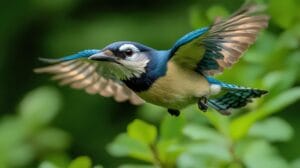Jhirna Zone, located in Jim Corbett National Park, is one of the most popular wildlife zones known for its year-round accessibility. The zone is home to a diverse range of wildlife, including tigers, elephants, and sloth bears, making it an excellent destination for wildlife enthusiasts and photographers.
Geography and Landscape 🌿
- Situated in the southern part of Jim Corbett National Park.
- Features a mix of dry deciduous forests, grasslands, and riverbeds.
- The Dhela River runs through the zone, providing a vital water source.
- Open terrains offer clear visibility for wildlife sightings.
- Surrounded by dense Sal forests and bamboo vegetation, adding to its beauty.
Wildlife in Jhirna Zone 🐅
Jhirna Zone boasts a rich biodiversity, including:
- Bengal Tigers – Frequent sightings, especially near waterholes.
- Sloth Bears – Often spotted foraging in the undergrowth.
- Asiatic Elephants – Large herds are commonly seen grazing.
- Wild Boars & Jackals – Roaming throughout the grasslands.
- Spotted Deer, Sambar, and Barking Deer – Abundant in the region.
- Monitor Lizards & Indian Cobras – Representing the reptilian species.
Birdlife in Jhirna Zone 🦜
Jhirna is a birdwatcher’s paradise, home to over 200 bird species, including:
- Crested Serpent Eagle & Changeable Hawk-Eagle
- Indian Peafowl, Woodpeckers & Parakeets
- Brown Fish Owl & Jungle Owlet
- Kingfishers, Drongos, and Flycatchers
- Various migratory birds (winter months)
Safari Experience in Jhirna Zone 🚙
- Morning Safari: 6:00 AM – 10:00 AM
- Evening Safari: 2:00 PM – 6:00 PM
Best Time to Visit Jhirna Zone 📅
Jhirna Zone remains open throughout the year, making it unique among Corbett’s zones.
- Winter (November – February): Best for birdwatching and pleasant safaris.
- Summer (March – June): Ideal for spotting tigers and other wildlife near water sources.
- Monsoon (July – September): Safari remains operational but with fewer visitors due to rains.
Accommodation and Activities Near Jhirna Zone 🏕️
Stay Options:
- Luxury Resorts & Eco-Lodges – Wildlife-themed stays near the park.
- Budget Hotels & Homestays – Affordable accommodations with easy park access.
- Forest Rest Houses (FRH) – Available for booking via the forest department.
Activities:
- Wildlife Safari & Photography – Capture tigers, elephants, and more.
- Birdwatching Tours – Ideal for spotting rare bird species.
- Village Tours & Nature Walks – Explore the local culture and environment.
- Corbett Museum Visit – Learn about the park’s history and conservation efforts.
How to Reach Jhirna Zone? 🚗
- By Air: Nearest airport – Pantnagar Airport (90 km).
- By Train: Nearest railway station – Ramnagar (20 km).
- By Road: Well-connected to Delhi, Nainital, and Haridwar via highways.
Why Visit Jhirna Zone? ⭐
✔️ One of the few zones open all year round
✔️ Diverse wildlife, including tigers, elephants, and sloth bears
✔️ Scenic landscapes with grasslands and riverbeds
✔️ Excellent birdwatching opportunities
✔️ Easily accessible with good road connectivity
Jhirna Zone offers an unforgettable wildlife experience, perfect for those seeking adventure and nature exploration. Book your safari today and step into the wild! 🌿🐅



